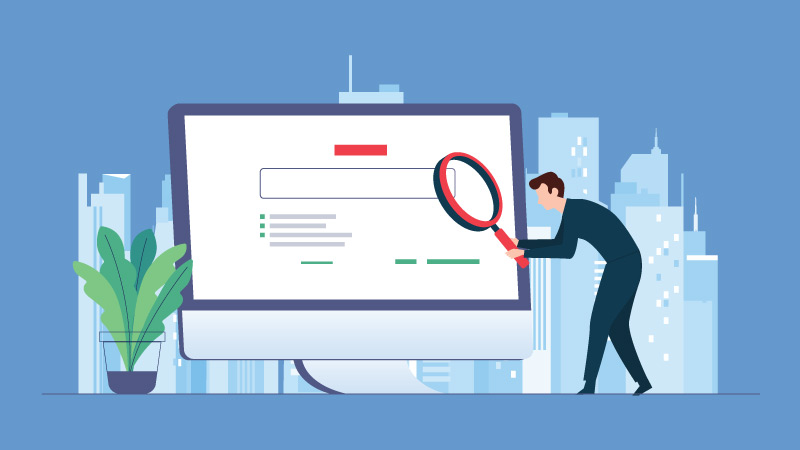Search Engine Optimization (SEO) often feels like a maze. There are hundreds of factors at play, from technical tweaks to content creation and link-building. For beginners, it can seem overwhelming. But what if you saw SEO as a game with levels?
Just like in a video game, each stage brings new challenges, but also new rewards. Complete every stage in the right order, and you’ll cross the finish line: Page One on search engine.
This guide takes you through the 9 stages of the SEO Game, giving you a detailed roadmap of what to do, why it matters, and how to execute it.
Level 1: Website Audit – Your Starting Point
Think of a website audit as the “health check” of your site. Before you start optimizing, you need to know where things stand.
What to check in a website audit:
- Technical performance: Is your site fast enough? Tools like Google PageSpeed Insights, GTMetrix, and Lighthouse can show where improvements are needed.
- Mobile-friendliness: Since most searches happen on mobile, your site must adapt seamlessly to smaller screens.
- Crawl errors: Use Google Search Console to find 404s, broken links, and indexing issues.
- Content audit: Identify thin content, duplicate pages, and outdated blogs.
- Security: Ensure you’re on HTTPS (not HTTP).
Pro Tip: Treat this stage like building a solid foundation. A house with cracks in the base will collapse no matter how nice the furniture looks and SEO works the same way.
Level 2: Website Optimisation – Powering Up
After finding issues in your audit, the next stage is optimization. This means fixing, polishing, and enhancing your site so it’s friendly to both users and search engines.
Key optimization areas:
- Site speed: Compress images, enable caching, use a CDN.
- Core Web Vitals: Focus on Largest Contentful Paint (LCP), Interaction to Next Paint (INP), and Cumulative Layout Shift (CLS).
- On-page elements: Optimize titles, meta descriptions, headings (H1-H6), and URL slugs.
- Internal linking: Create a logical internal linking to guide both users and search bots.
- Schema markup: Add structured data (FAQ schema, product schema, review schema) to make your search results more engaging.
Learn more about website speed optimization.
Pro Tip: Website optimization isn’t just about Google. A smooth, fast, well-structured site means better user experience, which directly impacts bounce rates and conversions.
Level 3: Competitor Analysis – Know Your Opponents
In gaming, you study your rivals before facing them. SEO is no different. Competitor analysis tells you who’s ranking, why they’re winning, and how you can do better.
Steps to analyze competitors:
- Identify top competitors by searching your target keywords.
- Content analysis: What topics do they cover? How in-depth is their content?
- Backlink analysis: Use tools like Ahrefs or SEMrush to see who’s linking to them.
- Keyword strategy: Check which keywords drive them traffic.
- User experience: Compare layouts, readability, and engagement.
Pro Tip: Don’t copy competitors, outsmart them. If they have a 1,000-word blog, create a 2,500-word guide. If they use stock images, add custom infographics. If they target broad keywords, win with long-tail queries.
Level 4: Customer Research – Understand the Players
SEO without customer research is like playing blindfolded. Ranking is pointless if you’re not solving your audience’s problems.
Steps to research your customers:
- Build personas: Who are your typical visitors? Business owners, students, professionals?
- Understand intent: Are they looking for quick answers, detailed guides, or products to buy?
- Map the buyer journey: Awareness → Consideration → Decision. Your content should meet users at every stage.
- Survey & feedback: Use tools like Hotjar or Google Forms to ask what users want.
Lean more on Content Marketing Funnel.
Pro Tip: Align every piece of content with search intent. Someone searching “What is SEO?” wants education, not a sales pitch. Someone searching “Best SEO agency in Dhaka” wants a solution right now.
Level 5: Keyword Research – Finding Your Weapons
Keywords are the core of SEO. They’re how people find you. But not all keywords are equal.
Types of keywords:
- Head terms: Short, high volume, but very competitive (e.g., “SEO”).
- Long-tail keywords: Longer, less competitive, more intent-driven (e.g., “SEO strategies for small businesses in 2025”).
- LSI keywords: Related terms that Google expects to see (e.g., “search engine ranking,” “organic traffic,” “backlinks”).
- Question keywords: Great for FAQs and Featured Snippets (e.g., “What is SEO game plan?”).
Tools to use:
- Google Keyword Planner
- Ahrefs / SEMrush
- AnswerThePublic
- Ubersuggest
Learn more about Keyword Research for SEO.
Pro Tip: Instead of chasing only high-volume keywords, focus on low-competition, high-intent long-tails, they’re easier to rank and bring in the right audience.
Level 6: Content Production – Building Your Strategy
Now comes the real battle: creating content that ranks.
Types of content to create:
- Blog posts: Informative, keyword-optimized, easy to read.
- Guides & tutorials: Long-form, in-depth, evergreen.
- Landing pages: Optimized for conversions and user intent.
- Infographics & videos: Great for backlinks and shares.
- Case studies & whitepapers: Authority-building content.
Best practices for SEO writing:
- Use keywords naturally in title, first 100 words, subheadings, and conclusion.
- Keep paragraphs short (2–3 lines).
- Add visuals, bullet points, and lists for easy reading.
- Write for humans first, algorithms second.
Pro Tip: Google’s E-E-A-T principle (Experience, Expertise, Authoritativeness, Trustworthiness) should guide every content piece.
Level 7: Backlink Acquisition – Gaining Authority
In SEO, backlinks are your reputation points. The more quality sites link to you, the more trustworthy you appear to Google.
Strategies to earn backlinks:
- Guest posting: Write for industry websites in exchange for links.
- Digital PR: Get mentioned in news outlets via HARO or press releases.
- Content marketing: Publish original research, stats, or infographics others want to reference.
- Broken link building: Find broken links on other sites, suggest your content as a replacement.
Pro Tip: Quality beats quantity. A single backlink from HubSpot or Moz is worth far more than 50 low-quality links.
Level 8: Performance Reporting – Tracking Your Score
You can’t win if you don’t know your score. Performance reporting helps you see what’s working and what isn’t.
Metrics to track:
- Organic traffic: Are visitors increasing?
- Keyword rankings: Which keywords are rising, and which are dropping?
- Bounce rate & dwell time: Are people engaging with your content?
- Conversions: Are your SEO efforts driving sales/leads?
Pro Tip: Don’t obsess over vanity metrics like impressions. Focus on metrics tied to business goals: leads, sales, and ROI.
Level 9: Content Tuning – The Final Boss
SEO isn’t a one-time game. Even after you’ve published and ranked, you need to keep tuning.
Ways to tune content:
- Update old posts with new data/statistics.
- Add new sections to keep articles fresh.
- Optimize underperforming content with new keywords.
- Strengthen internal linking to boost authority.
Pro Tip: Google loves freshness. Even updating a 2-year-old blog can give it a ranking boost without writing from scratch.
The Finish Line: SEO Victory
By completing all nine levels of the SEO Game, you position your website for long-term organic success. Each stage builds upon the last, from fixing technical issues to producing world-class content and continuously improving.
The rewards?
- Higher rankings
- Increased organic traffic
- Stronger brand authority
- Consistent leads and sales
Remember: SEO isn’t luck. It’s a strategic game. Play it smart, and the finish line isn’t just Google’s page one; it’s sustained online growth.
Final Tip: SEO is not a sprint; it’s a marathon game. Keep playing, keep improving, and you’ll always stay ahead of competitors.
Learn more about SEO career insights.




